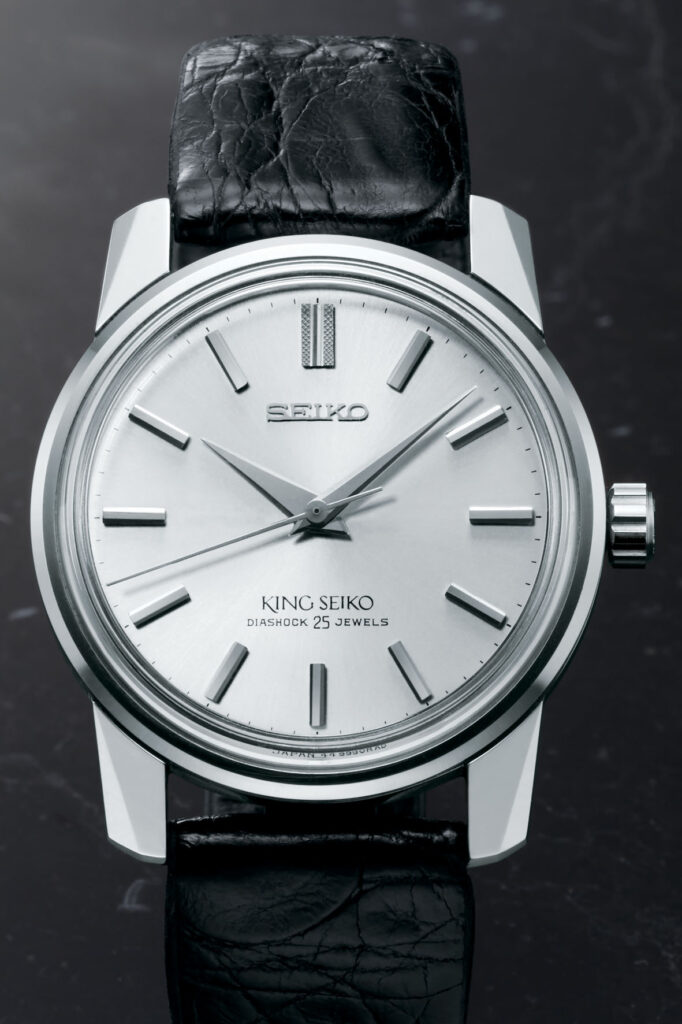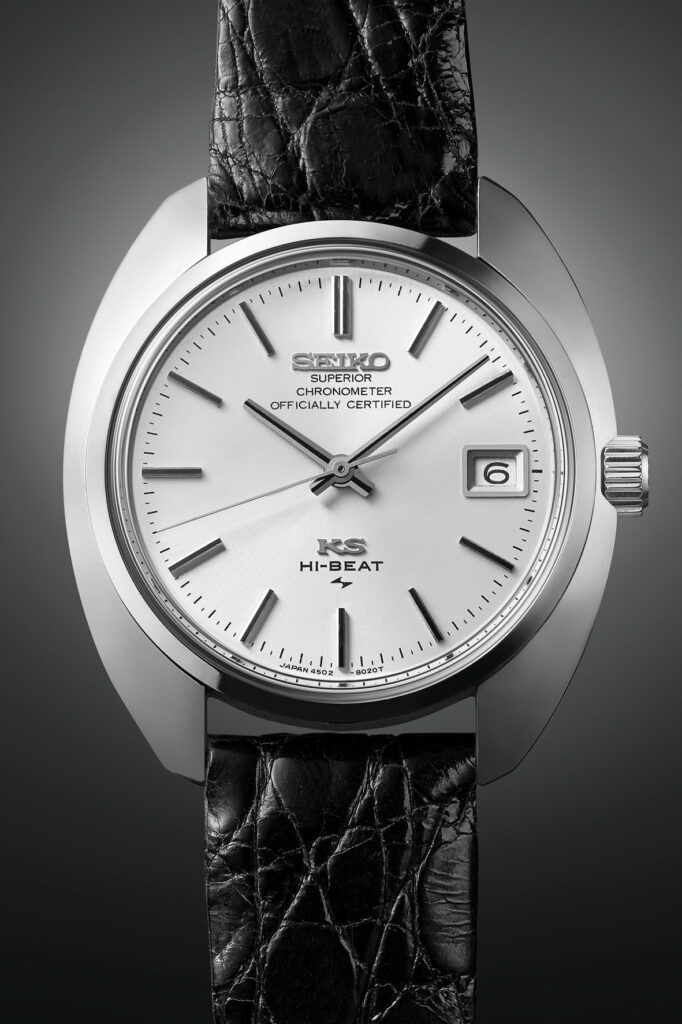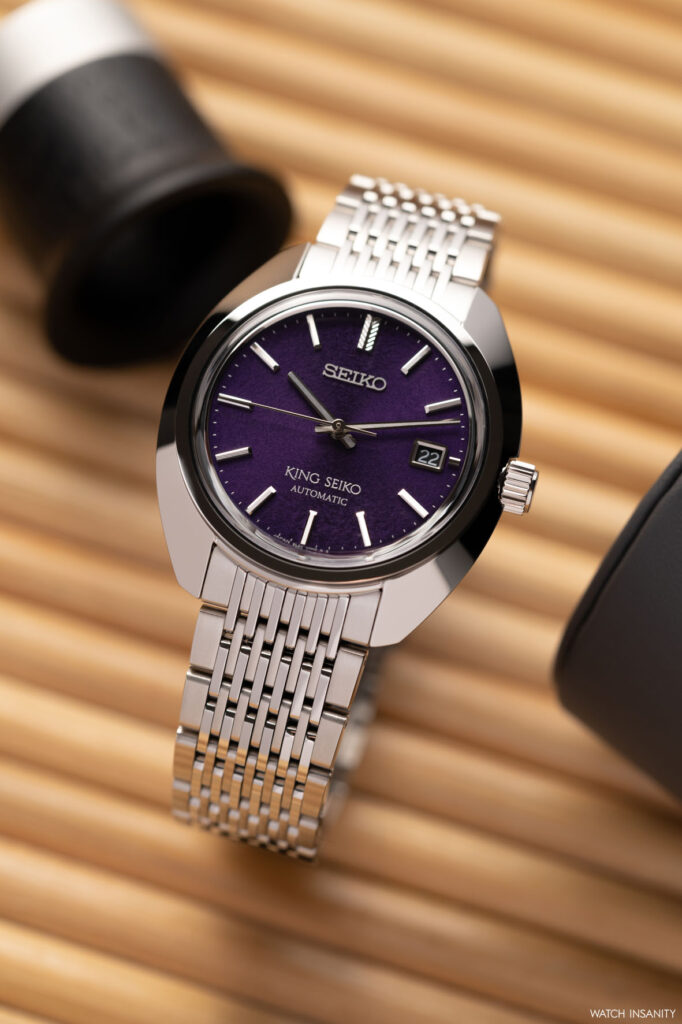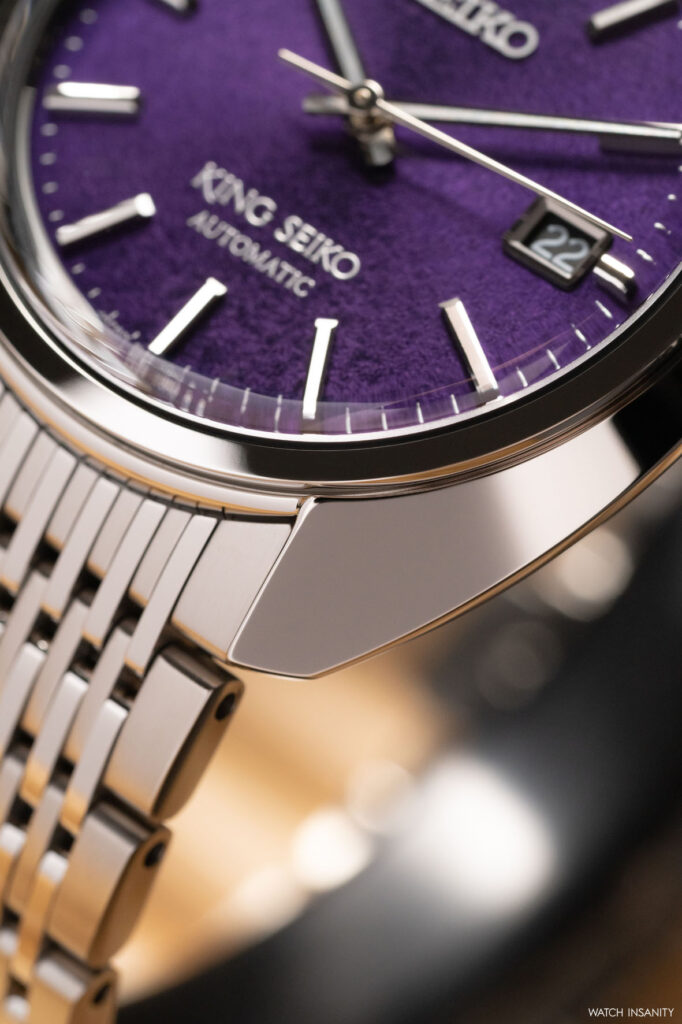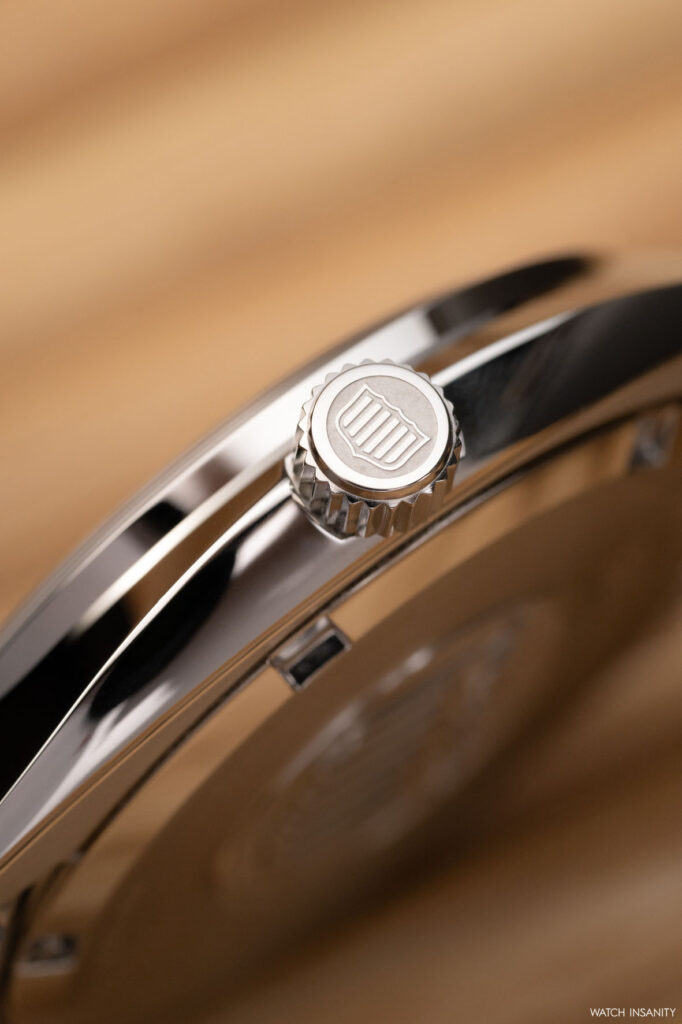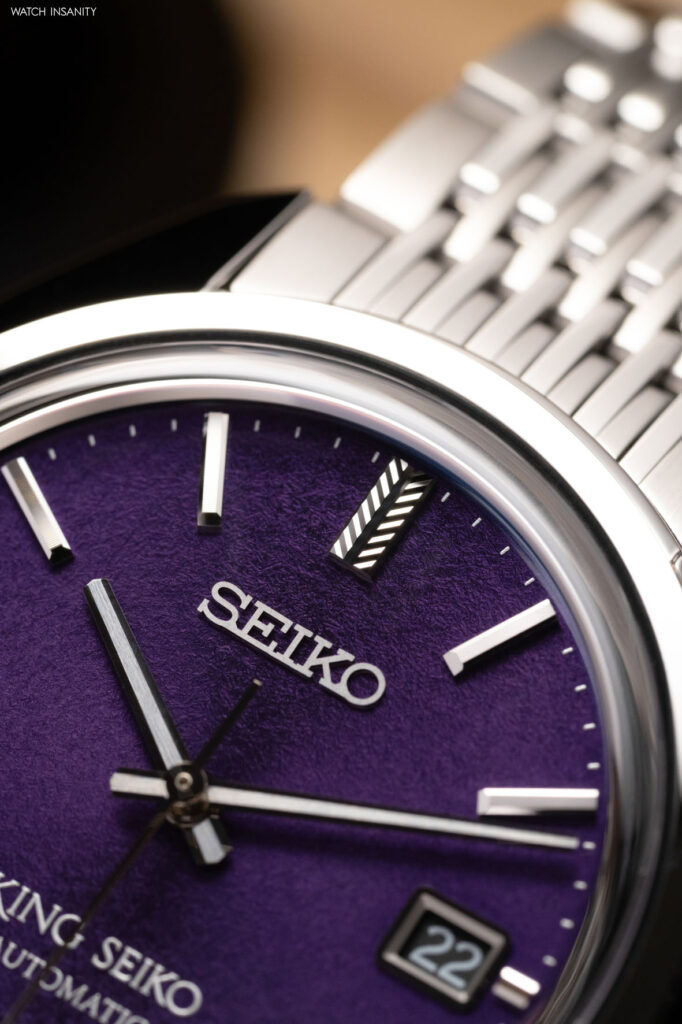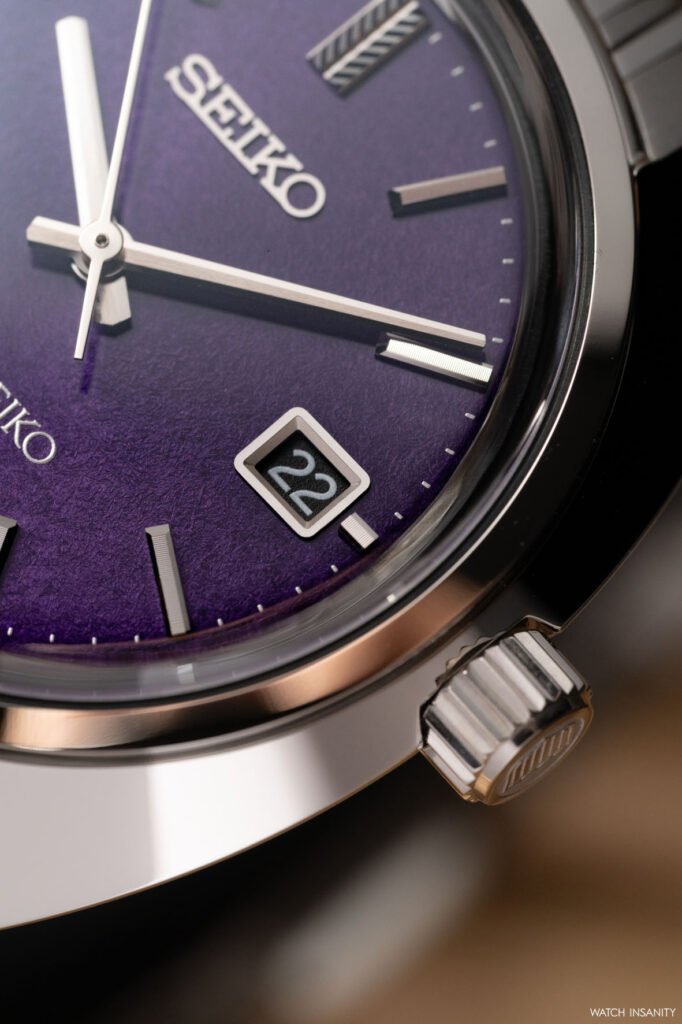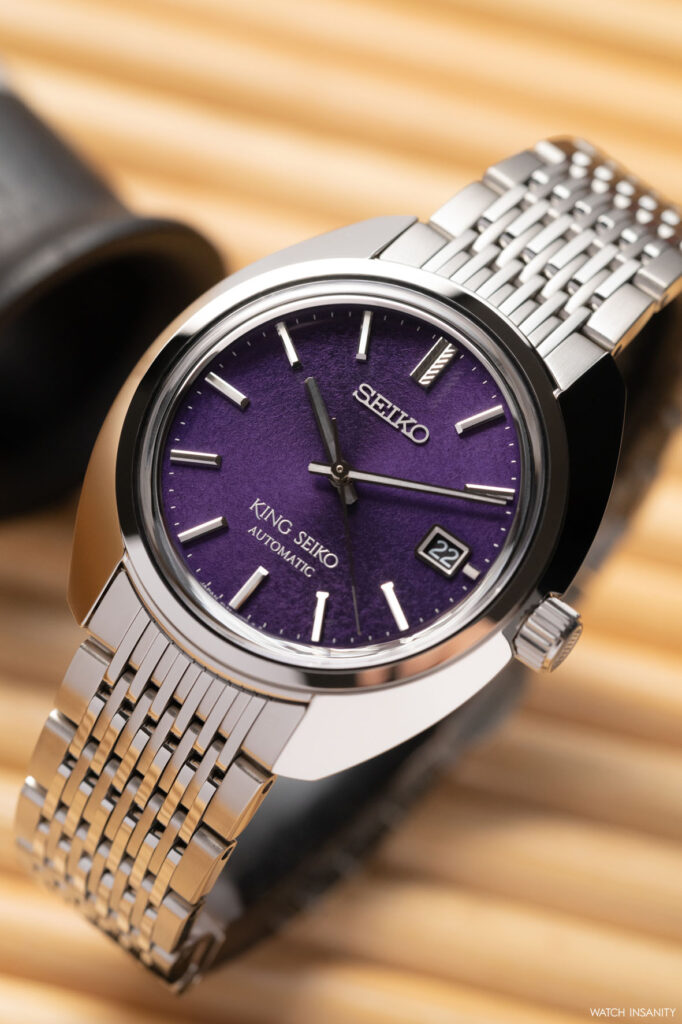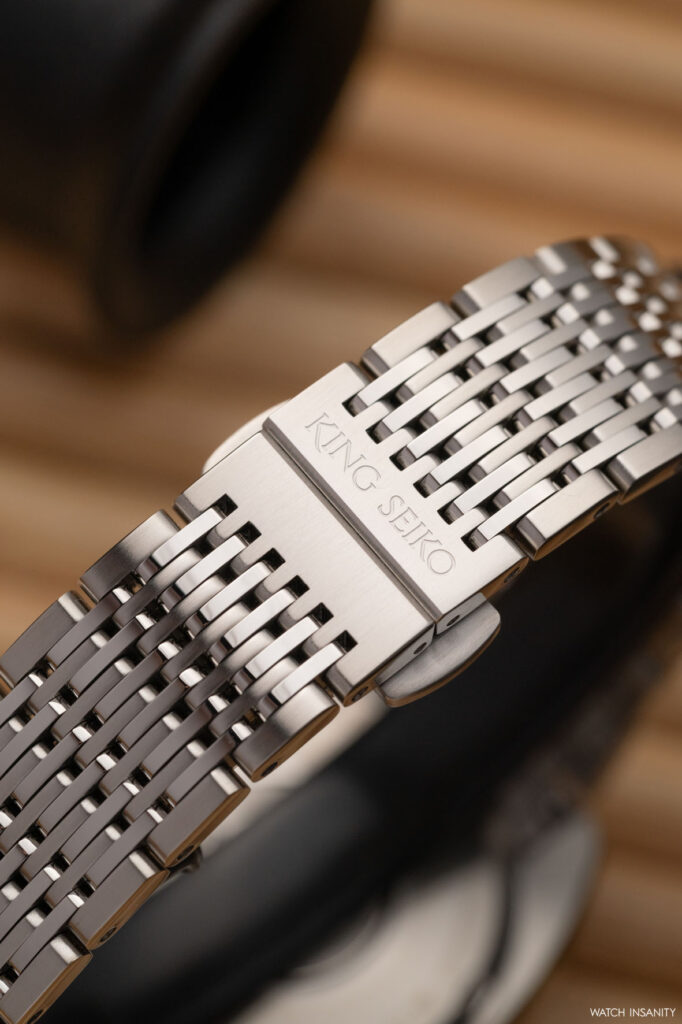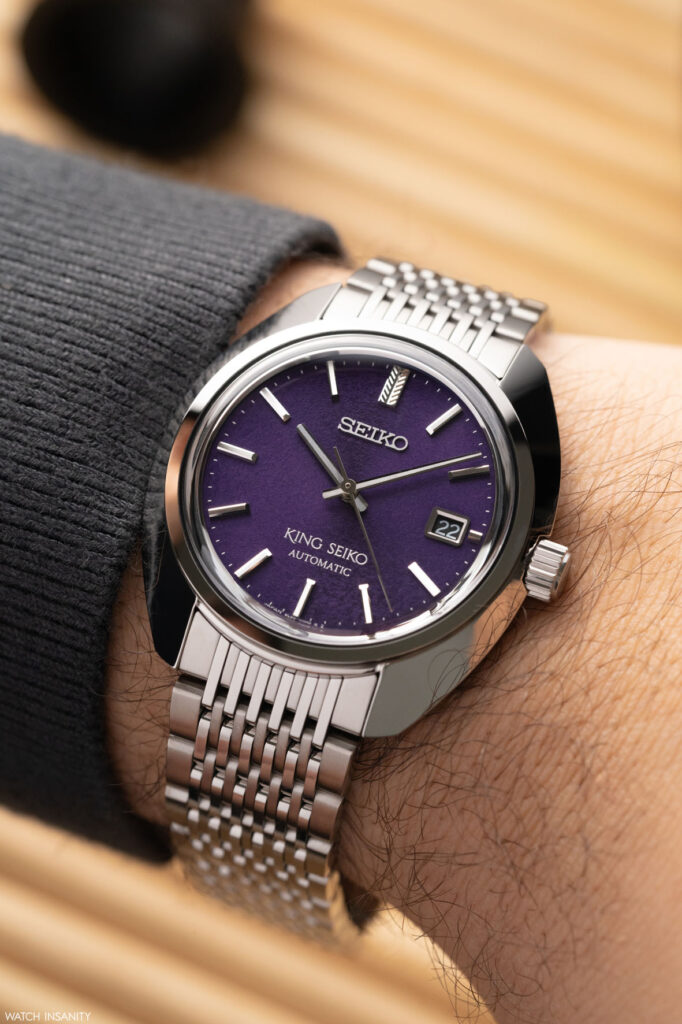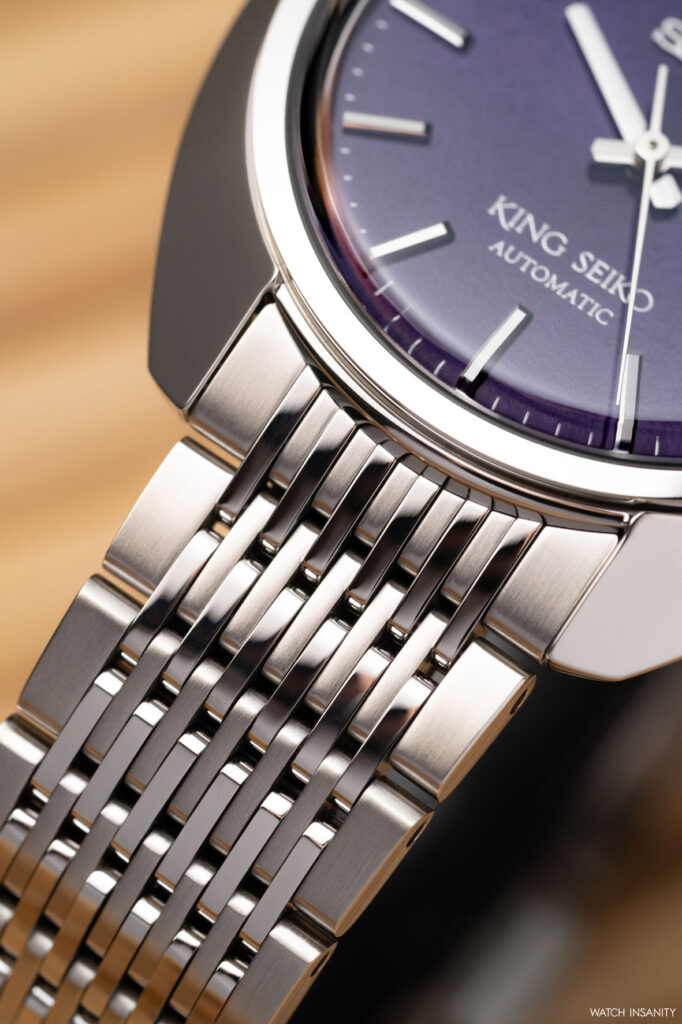King Seiko KS1969: the elegance of tradition
24 July 2024It is no secret that Seiko reaches out to a wide target group of enthusiasts and collectors. From the entry-price Seiko 5 Sports to the fine collections dedicated to diving and sports, the different models and souls of these Japanese watches offer something for everyone. Such as the King Seiko collection, which recently launched a new series inspired by a 1969 design and which, after the relaunch at the beginning of 2021, has distinguishing itself thanks to proposals with refined aesthetics that can’t be simplistically labelled as vintage. Because this style plunges its roots not only in the brand’s history, but in that of a country and an era – Japan of the 1960s – that marked Seiko deeply, along with consumers’ tastes, both Eastern and Western.
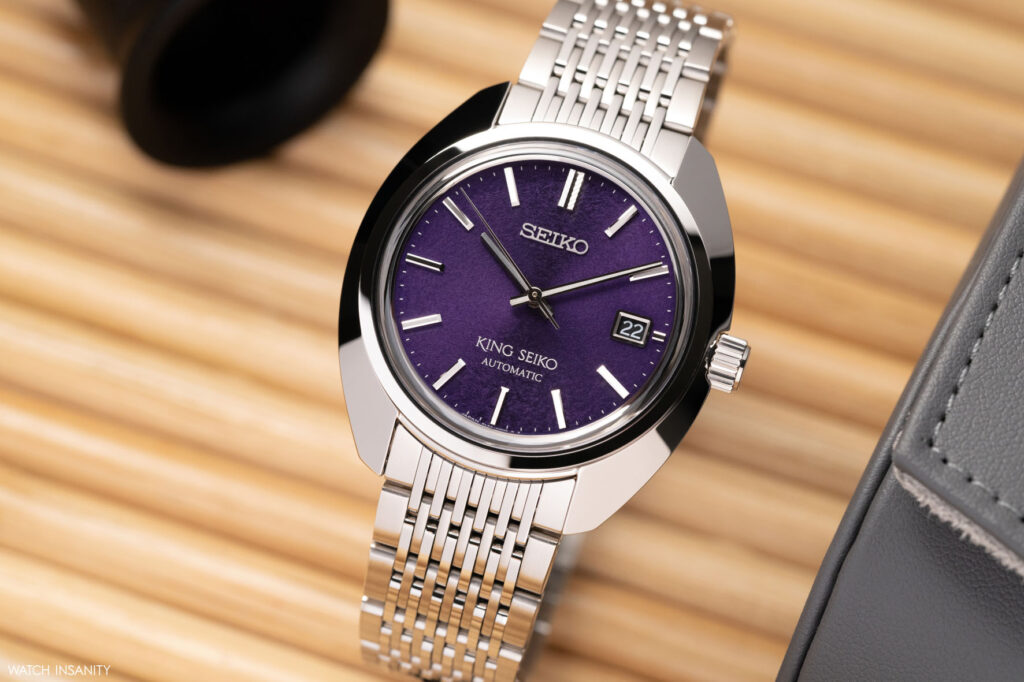
FROM SEIKO TO KING SEIKO
The brand, originally known as Seikosha, was founded in 1881 by Kintarō Hattori. Part of the manufacture’s rebranding in the early 1960s was driven by the company’s decision to produce more modern, accurate and luxurious watches. At that time, Seiko had two production sites: Suwa Seikoshaand Daini Seikosha. The healthy rivalry between them fostered progressive technological innovation that resulted in ever greater excellence in the watches produced.
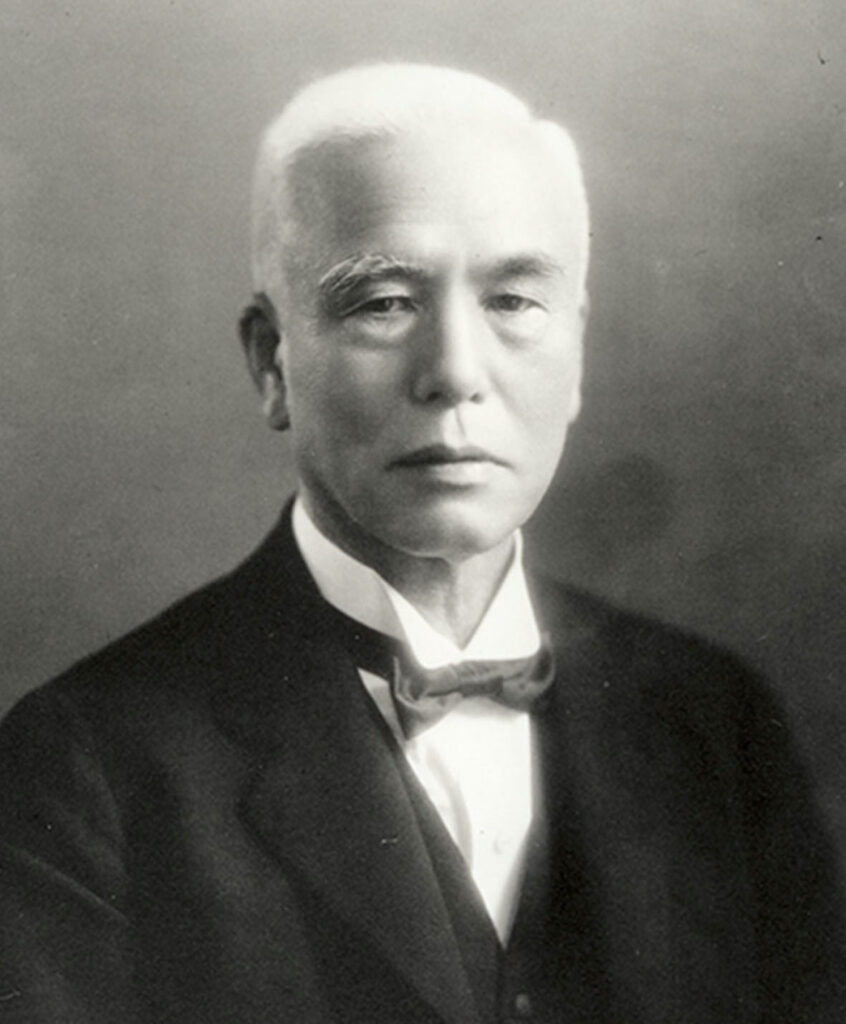
In 1961, Daini Seikosha developed its own luxury watch, the King Seiko, and four years later, in 1965, launched the second generation of the model – equipped with the hand-wound Calibre 44A – with the reference 44-9990. This timepiece was named KSK, where KS stood for King Seiko and the final K stood for Kisei-Tsuki, which means stop-second in Japanese. The King Seiko collection was recognized over time for its timepieces characterised by the excellence of Japanese craftsmanship and powered by reliable mechanical movements.
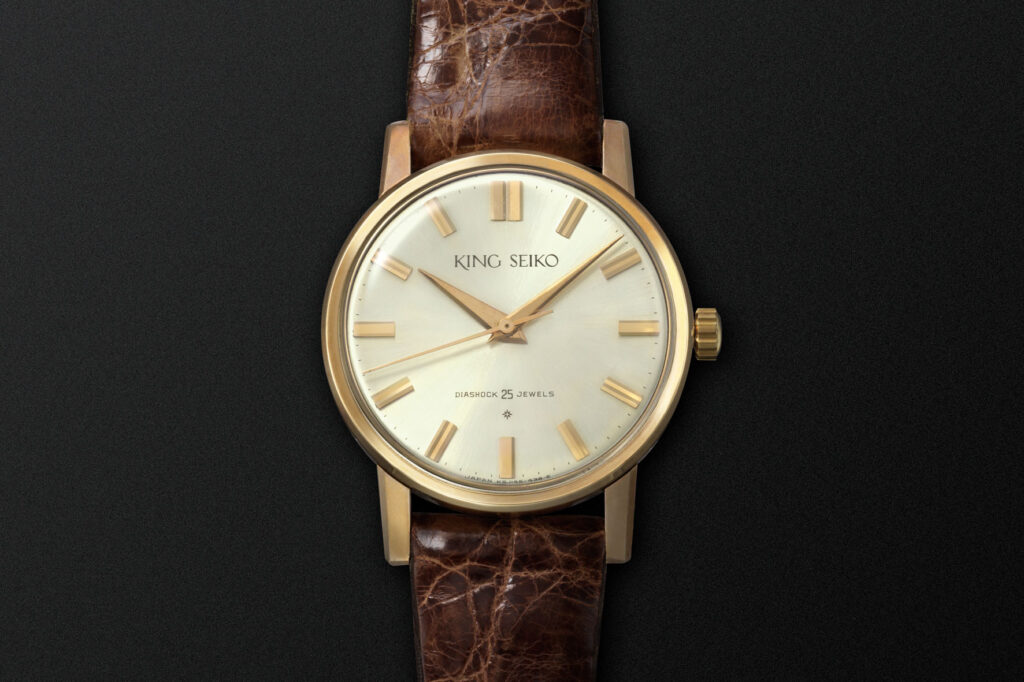
For example, many calibres were high-frequency, and in 1968 Seiko won the Geneva Chronometer Competition. In the same year, Daini Seikosha submitted 103 examples of its manual calibre 4520 to the Neuchâtel Observatory to obtain the chronometer certification. These were high-frequency movements operating at 36,000 vibrations per hour, like the chronometers that won the Geneva Prize: 73 calibres passed the test and were certified as observatory chronometers.
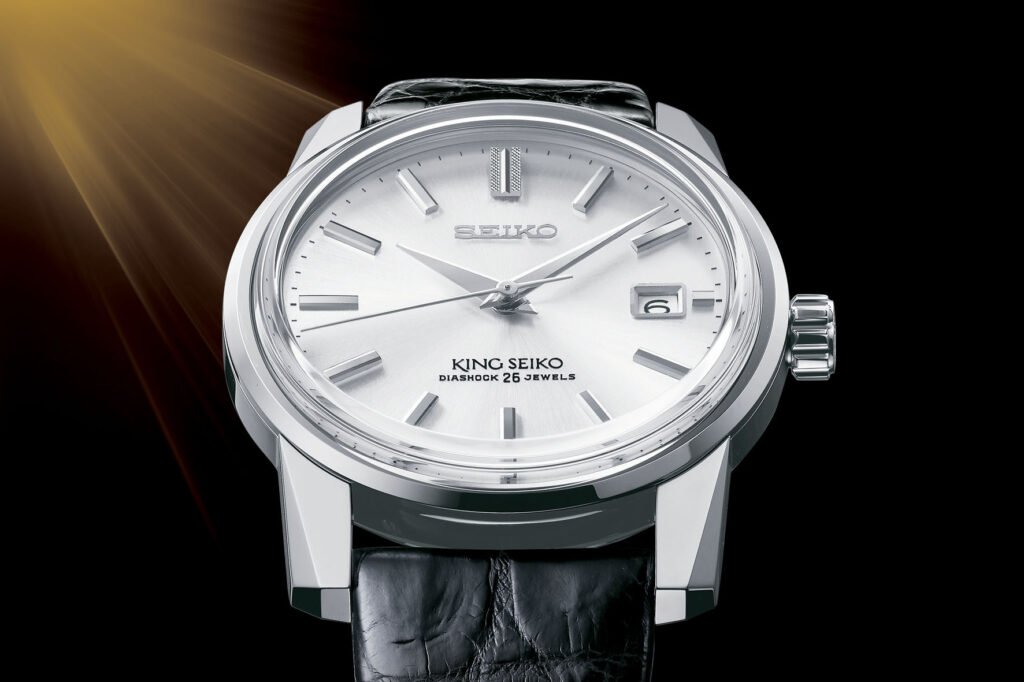
King Seiko went out of production in the mid-1970s and, to this day, this collection’s watches have become highly sought-after on the secondary market. After a temporary revival in 2000, in January 2021 Seiko reissued a limited edition of the most sought-after King Seiko, the KSK SJE083 from 1965. It now revisits to those years with its new series, on this occasion based on a 1969 model, re-interpreted through modern eyes.
THE DESIGN OF THE KING SEIKO KS1969
King Seiko has in fact dug deep into its archives to create the KS1969 series, a collection of dress watches based on the 1969 King Seiko 45KCM. A watch that had the virtue of introducing a new case silhouette and inspired numerous other creations by the brand over the next decade. Although the overall aesthetics of the King Seiko KS1969 are unmistakably inspired by their vintage predecessor, the new models are made using modern materials and production methods. The series debuts with three different colour variants, plus a fourth limited edition which celebrates the 100th anniversary of the first watch to feature the Seiko logo on the dial.
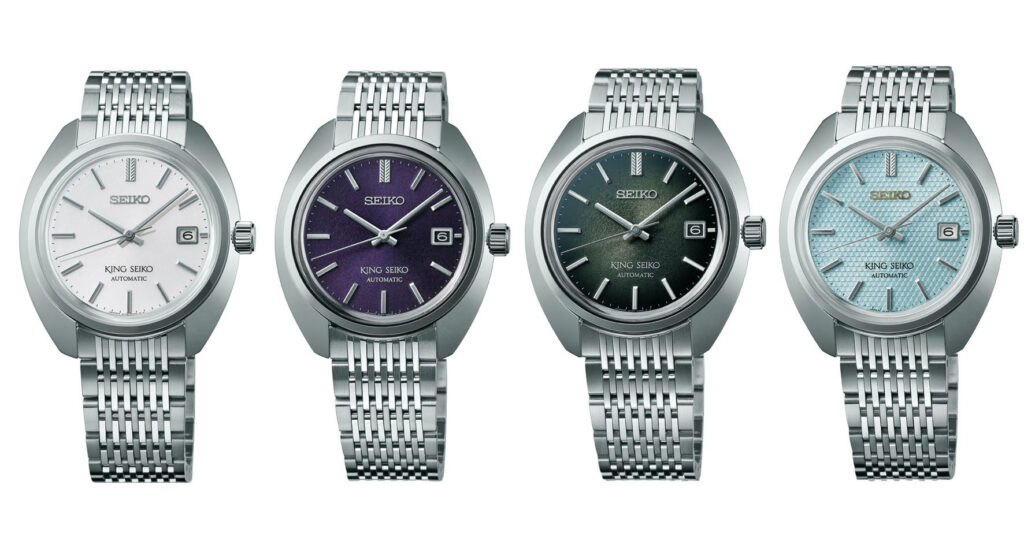
What immediately catches the eye is the distinctive cushion shape of the case, which characterised the 1969 model. A shape that, as with all Seiko watches, should not be considered on its own, but as a part of the overall aesthetics of the timepiece, seen itself as an object in space. A holistic design philosophy that recalls Taro Tanaka‘s “Grammar of Design” that you can discover here. Apart from its shape, what distinguishes the new King Seiko KS1969’s case is its curvature, which makes it ergonomic and comfortable on the wrist. The dimensions are quite small, being a dress watch: 39.4 mm in diameter by 9.9 mm thick. Together with the sapphire glass box, this makes the watch particularly suitable for wearing under a shirt.
As is in the King Seiko tradition, maniacal attention has been paid to the case’s manufacture, to say the least. One might say that its shape, rather than the steel it is made of and the machines that machined it, is created by light. The mirror-polished surfaces, including the thin bezel, reflect light rays and send their gleam back to the hour markers and dial, in an interplay which gives the watch an organic harmony.
MASTERPIECE DIALS
In addition to the designer case, the highlight of the King Seiko KS1969 is the dial or, rather, the choice of its colour and its manufacture. It is in fact available in three standard colours: silver, forest green, and a so-called ‘Edo purple’ shade – which you can appreciate in our pictures. It is thus called because it is inspired by a colour that was very popular during an era in Japanese history, the Edo period (Edo, by the way, is also the ancient name for Tokyo), which lasted from 1603 to 1868. King Seiko gives the green a certain hue which captures the colour of the vegetation that has marked certain areas of Tokyo over the centuries.
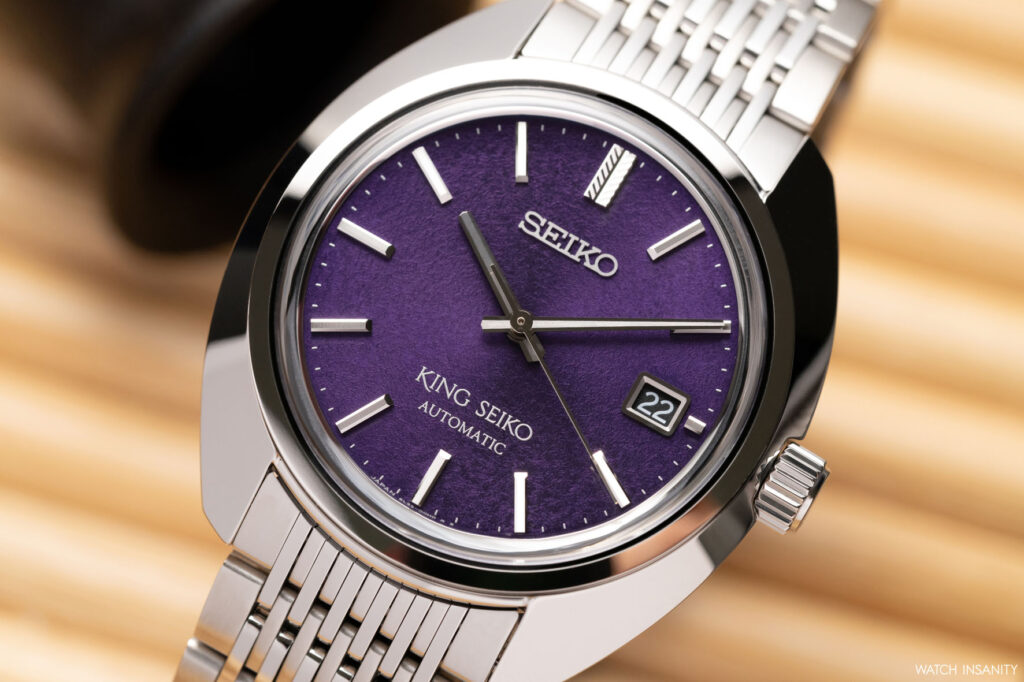
The finish of the dials in the purple and green versions is slightly grained, recalling the texture of traditional washi paper – an essential element of Japanese art and culture for centuries. The silver dial, on the other hand, has a more uniform finish which, in our opinion, brings the timepiece closer to the 1969 King Seiko 45KCM. In addition to the three dials that will be part of the current collection, as mentioned above, Seiko has also produced an edition limited to 700 pieces. It distinguishes itself from the others by the colouring of the dial, which could be described as ice-blue, and by its manufacture: a structured motif evoking the scales of a dragon, the zodiac sign of 2024 in the Japanese calendar.
The date window is at 3 o’clock. A detail that one may or may not like, but which in the case of the KS1969 collection has been the object of Seiko’s attention. On the one hand, the typeface used for the numerals is very similar to that found on the original 45KCM. On the other, the colour of the date disc has been adapted to that of the dial: dark for the purple and green dials, white for the blue and silver dials.
The hands feature brushed upper surfaces and polished bevels, a process echoed by the applied indexes with facetted edges and a polished finish. Similarly to other King Seiko models, the dials of the new KS1969 watches have an index at 12 o’clock that is clearly visible, offering immediate access to reading the time. Its aesthetics are well cared for: it has a motif reminiscent of an arrow feather, a familiar element of the Japanese discipline of archery. To maintain the dress watch spirit of yesteryear, the hands and indices are completely free of luminescent material, which gives the collection an even more refined and elegant look.
KING SEIKO 1969: CALIBRE AND PRICE
While the original 1969 King Seiko 45KCM was powered by a chronometer-certified hand-wound Calibre 45, inside the KS1969 beats the Calibre 6L35, a slim self-winding calibre. Introduced at Baselworld 2018, the 6L35 is a further development of the 4LXX, which in its 4L75 version was employed by Credor. It is mainly used in Seiko’s mid-range offerings and is therefore better finished and more finely tuned than its ‘simpler’ stablemates, such as the calibre 6R15.
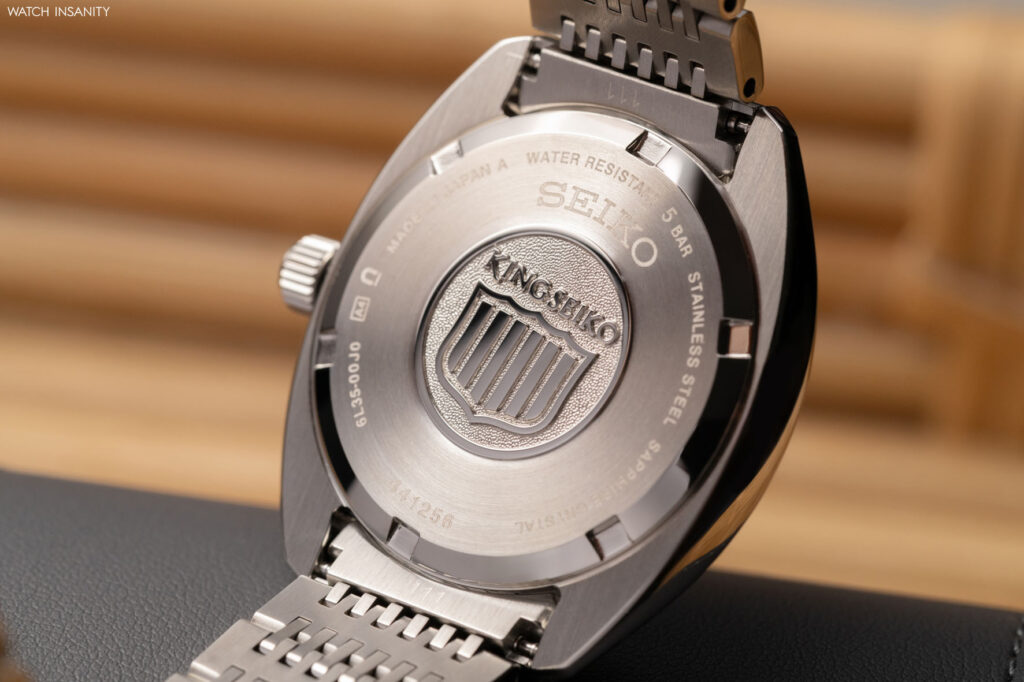
Compared to Seiko’s entry-level automatic movements, the calibre 6L35 offers superior specifications, with a higher operating frequency of 28,800 vibrations per hour and a power reserve of around 45 hours. It also offers tighter timing tolerances, with standards of -10/+15 seconds per day. Despite its precision and reliability, in our opinion the movement lacks some technical finesse such as the silicon balance spring. After all, most watches in this price segment have reliable movements, and design and finishing are among their strengths. There is no doubt that, regarding these two aspects, the King Seiko KS1969 is at the top.
This is also demonstrated by the steel bracelet that completes all four references in the collection. It is a bracelet composed of no fewer than 13 rows whose surfaces alternate between brushed and polished, with a design that looks almost like a sort of flattened rice grain. The result is a soft and precise fit (we tried it on at the Seiko Boutique in Milan, Via della Spiga), accentuated by the use of a butterfly clasp with a double release button that keeps the profile of the bracelet slim and wearable.
A note of credit to Seiko for its pricing policy. From everything you have been able to read above, it should be clear that the new King Seiko KS1969 is at the high end of the brand’s offering; hence the €3,200 price of the collection is consistent with both the positioning and the evident high quality of the King Seiko KS1969. The fact that the limited edition costs the same as the watches in the current collection is appreciable. A sign of respect for the market, for enthusiasts, and for the tradition of which this watch is the custodian.
By Davide Passoni

